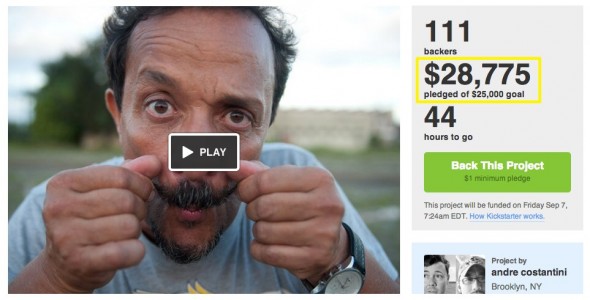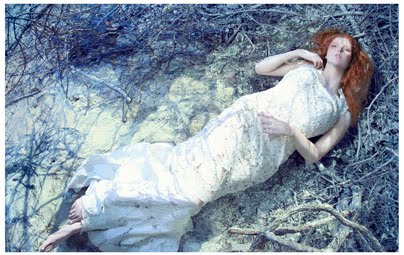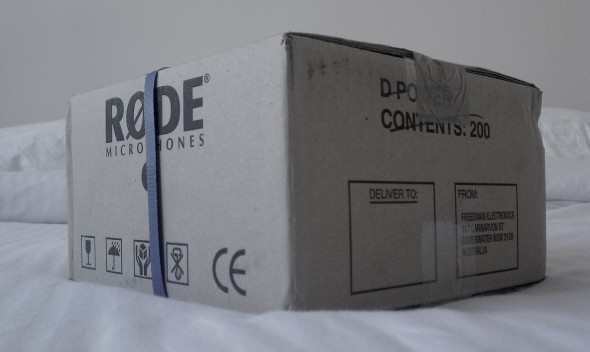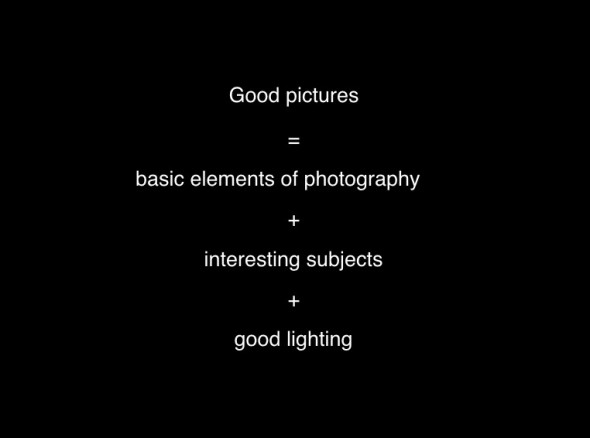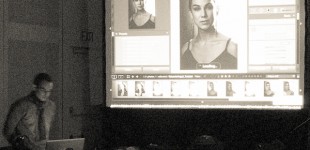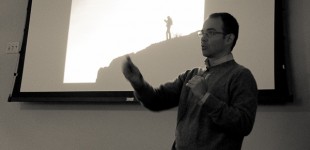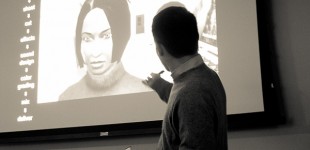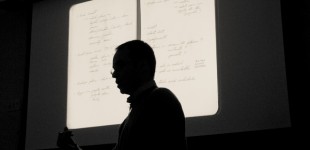Video
Photokina 2012 focuses on HDSLR Video.
Every two years there is one focal point in the Photo industry: Photokina, the world’s leading imaging fair. Photokina covers the entire spectrum of imaging, from image capture to image processing and storage to image output. This is where new trends and major innovations are presented to the world, and where the spotlight is on groundbreaking technological developments including mobile imaging, connectivity, and moving images. The show always delivers an impressive program of workshops, symposiums, photography exhibitions and many special events at the exhibition centre and at sites all over Cologne.
As you might know every Photokina show focuses on one single topic. Because filming withHDSLR systems is increasingly becoming a necessity for professionals, this year’s topic is HDSLR Video.
The show has created a “Shoot Movie Park” in Hall 4.1, offering a unique area where suppliers have an optimal location to present themselves to the attendees. The Movie Park will be supplemented by a series of lectures, workshops and exhibitions. Canon will present Richard Walch, sailor, snowboarder and photographer. Zeiss will have Sebastian Wiegärtner, one of the first users in the German-speaking region to understand and make use of the capabilities of the new HDSLR systems. We are very excited to be representing X-Rite, and show our most recent Color Management Video Tutorials (Video 1, Video 2 and Video 3).
Representatives of ADF — Arbeitskreis Digitale Fotografie (digital photography working group) will also be sharing their expertise as they answer visitors’ questions about digital photography and film. More information about the “Shoot Movie” program can be found here.
Stay tuned! We will be sharing the most exciting news and products live from Photokina via Twitter and Facebook. If you are not yet following us, do so today!
Video
A movie about the most inspiring Brazilian artist you’ve never heard of.
UPDATE 0905: Mission Accomplished!!!!!
My extremely talented friend Andre Constantini has been working on a feature film called “Bel Borba Aqui.” The movie is about the most inspiring Brazilian artist you’ve never heard of.
While chatting with Andre about the film and his current Kickstarter campaign, I was schocked to know that they have well over 600 hours of footage. Andre shares here snippets of our conversation.
It’s Exponential
I just recently completed my first feature documentary film. With over 600 hours of footage and 3 years in the making, there has been a lot of time invested into the project. I had made short films before but increasing the scope of any project of this magnitude seems to exponentially increase the time it takes to complete it. But I digress, before you start a documentary it helps if you know the story you want to tell or the topic you want to explore.
Put It Out There
One year before I even knew that the subject of my film, a Brazilian artist living in Salvador, Brazil existed, I had a conversation with a colleague of mine expressing my desire to make a feature documentary on a living artist. A year later, I received a phone call from the same colleague stating that he found him and he was in Brazil and that I should come and meet him to see if it would work out.
Always Be Ready to Go
Even though we were just supposed to discuss the possibilities, on the first trip, I brought all of my equipment to shoot and after meeting the first day, we started shooting the second day. When I returned from my week long trip, I had already filmed for three days. This was enough to start cutting a short piece together to excite the subject and support.
The Edit Room
The editing process went along simultaneously with the shooting to some extent, coming up with rough sequences or themes. The key is not the is not where you start, it’s THAT you start. I find that as you have an idea for one scene or footage that you know worked out or you like, start there and find other footage that supports it visually or thematically (maybe even both). This part always takes the longest. But plan to have plenty of time to do this. Personally, I am best when I have large chunks of time where I can focus without distractions.
Here’s the Trailer:
The film is scheduled to release theatrically on October 3rd for a two week run at Film Forum in NYC. Let’s support Andre with his Kickstarter campaign. It could be you needing financing in a few years…
Video
The Sounds of Aronofsky.
The sounds of Darren Aronofsky, including fantastic movies like Black Swan (2010), Requiem for a Dream (2000), Pi (1998), and The Fountain (2006). Simply brilliant.
Video
The Business of Photography. Upcoming SCAD’s Silver & Ink events.
The Savannah School of Art and Design (SCAD) recently held a Photo Exhibition open to all undergraduate and graduate photography majors or minors who are/were enrolled as full-time or part-time students during the 2011-12 academic year at any SCAD location (Savannah, Atlanta, Hong Kong or eLearning). Each student submitted up to three entries from all different genres: fine art, commercial, product, editorial, documentary, alternative processes, new media/experimental, and 2D/3D mixed media. Over 750 entries were received!
Later this month, we have been invited to join the reviewer’s panel at the opening reception, and be part of the photographic review taking place April 26th through the 28th. Lauren Wendle, VP and Publisher of PDN Photo District News will also be there to share her always relevant views on the photo industry. Other speakers include Chicago artist photographer Terry Evans, Michael Itkoff, founding editor of Daylight Magazine, and Finnish-American photographer Arno Rafael Minkkinen.
On Friday April 27th, we will be talking about “The Business of Photography” covering topics like marketing and self-promotion, building a client base, and working on assignment. The panelists featured in PDN’s 30th issue, will share how they got to where they are today, what they learned in school, what they wish they had been taught, and will provide advice for students who are heading into the professional photographic industry.
I am always excited to see such a variety of new student work. We see so many different trends in photography whether in commercial advertisements, editorial magazines, fine art, or documentary work. Students are aware of those trends, but they are still experimenting and finding out who they truly are as photographers. Their body of work shows a progression and gives us a brief view of where contemporary photographic imagery is heading. This panel discussion will help the students answer questions about their future career as artists and professional photographers. Creativity and technical skills are always required, but business skills are paramount in order to be successful in our extremely competitive industry.
More information is provided on Scad’s Photo Blog.
Video
Conversations with Friends.
For this week’s “Conversations with Friends,” (Episode 7), we continue our dialogue with Ted Kawalerski, professional photographer and director, about his own transition from still photography to documentary and corporate filmmaking, and the challenges involved.
Ted also shares more light on his upcoming Family Life Academy video project, located in the South Bronx in New York City as well as his views on retirement.
As always, please share with us your feedback and thoughts.
Video
Conversations with Friends.
On the sixth Episode of our “Conversations with Friends” we sat down with Ted Kawalerski, professional photographer and director, to talk about his transition from still photography to documentary and corporate filmmaking after a 35-year career.
Ted talked about finding great partners for his digital cinema projects, and shared with us some of the rewards and joys and technical frustrations he has discovered during his transition.
We discussed Ted’s upcoming Family Life Academy video project, the importance of sound, the video editor’s role, and storytelling. In fact, we covered so many interesting topics that we decided to edit Episode 6 as Part 1, and Episode 7 as Part 2.
For this Episode we used Rode Lavalier Mics and Ted mentioned his preference for Rode Shotgun mics.
To celebrate the Spring’s arrival, Eduardo enjoyed a “sparklingly mild and fruity” Paulaner Hefe-Weissbier natural wheat beer with a “delicate yeast flavour, gleaming orange colour, and uniform cloudiness.” Ted drank about a gallon of tap water.
Here are the links to Episode 05, and Episode 04.
Please add your comments below! Are you enjoying our Conversations? Did you learn something new today?
Video
Stunning tilt-shift video at the Carnival in Rio.
An absolutely stunning Tilt-Shift/Timelapse video of the Carnival in Rio de Janeiro, Brazil. Shot by Sydney photographer and filmmaker Keith Loutit and Jarbas Agnelli.
Video
Conversations with Friends.
Welcome to Episode 4 of our “Conversations with Friends” series, today with professional film editor Christopher Pecoraro. Ruled based art, Alfred Hitchcock, and filmmaking techniques are among the interesting topics we discussed.
Our wine was the Indian Creek Pinot Blanc 2009. It was fairly balanced and refreshing, with lemongrass and pomegranate notes on the nose, with a short finish and decent acidity. A decent QPR if you can find it under $10.
To see Christopher’s work please visit his website and blog.
If you missed the previous episodes, check them out here: Episode 001 with Justin Katz, Episode 002 with Bobbi Lane, Episode 003 with Robert Ammirati. The next Episode will be awesome!!
Video
Wes Anderson, on top.
Just like “trunk shots” are Quentin Tarantino’s visual trademark, using a high-angle for the camera, and pointing it straight down seems to be Wes Anderson’s fetish. Check this out.
This is yet another of the many differences between the two great directors. If you are aware of other directors’ trademarks, please send them our way.
Video
Testing Canon’s C300 in jail.
A beautiful test video shot on the Canon EOS C300 at the Eastern State Penitentiary, in Philadelphia, PA. The video shows the ungraded Canon Log version and includes the ISO data for each shoot. The quality is amazing.
Also check the Penitentiary’s “360 degree tour.” It was shot by someone else using QuickTime VR technology. Historic photos accompany each of the 20 views, to illustrate how the place has changed over the last 170 years.
Video
Rode delivers a customer service lesson.
About 30 seconds ago, DHL delivered my new Rode Lavalier Microphones. I have not opened the box, and I already know I will LOVE them. Do you want to know why? Simply because after I ordered them last week, I got an email saying that they were backordered for 2-3 weeks (they must be selling like hotcakes!). I replied explaining that I needed them for a shoot next week. So what did Rode do? They simply shipped them, second day air, from AUSTRALIA, at no extra charge, so I could have them on time. Unbelievable.
I could spend the rest of the day naming the companies that could use my experience as an outstanding customer service lesson, but I won’t. I’ll go ahead, open the box, and play with my brand new toys. Price is not everything, quality and support is. Keep that in mind.
Video
Using an iPad as a Key Light.
Rodney Charters, Drew Gardner and Lan Bui playing with the new Canon EOS C300 camera. To test the camera’s 20,000 ISO capability, they shot a low-light scene using an iPad for the key light and an iPhone for the fill light. This is way too cool.
Test Technical Notes:
Camera: Canon C300
ISO: 20,000
Lens: Canon 100mm f/2.8 IS L lens
Aperture: f/2.8
Shutter: 1/25th (360 degree)
Canon Log Gamma
Video
Video Lighting Tutorial.
Bobbi Lane shares a 30-second tutorial on lighting techniques for digital cinema using only two Lowel Tota 1000-watt lights (more about this on a future post). Before and after images and lighting diagrams are included.
Is this too short? Too long? Would you like to see more 30-second Tutorials? Talk to us.
UPDATE: May readers and Lynda.com subscribers have been asking about the equipment we used on our Lighting course on Lynda.com. Here are the answers:
We used a variety of lights, but the main ones were Bowens Limelite Mosaic 30x30cm Daylight LED Panel.
As our A Camera we used a Canon EOS C100 Cinema EOS shooting to an Atomos Ninja-2 recorder. As our B and C Cameras we used a couple of Canon EOS 5D Mark III. We used a variety of lenses, but the main one was the Canon EF 70-200mm f/2.8L IS II USM.
Video
Conversations with Friends.
Today we start with Episode 001 of our bi-weekly series “Conversations with Friends.”
The goal is to meet with different people we find interesting (and opinionated) and simply chat about trending topics, recent developments in technology, new toys that we like or hate and simply have a good time while enjoying a glass of wine. On today’s episode I talk with Justin Katz about the Eye-Fi Pro X2 8GB Wireless Memory Card. Did we like it? Watch to find out.
If you want to participate on our conversations or would like us to cover a specific topic just post a comment or shoot me an email.
Next week I’ll add the link with step-by-step instructions on how to set up the Eye-Fi Card on an iPad, an Android Tablet, and a Mac Book Pro. Here are the card’s features.
The wine we tasted was the 2009 Casarena Malbec, Mendoza, Argentina. It was very good and a great buy for $14.
Video
How much is Slow-Mo worth? Twixtor vs. Adobe Premiere Pro.
Tuesdays Tutorials.
We recently purchased a Canon EF 70-200mm f/2.8L II IS USM lens, and tested it by shooting stills and video at a skate park in Manhattan. We liked some of the footage we got, and decided to quickly play with some slow motion effects in Adobe Premiere Pro CS5
.
One of our friends at Abel Cine suggested that we look into Twixtor, and we did. Here are the side-by-side videos, so you can judge the quality by yourself.
Adobe Premiere Pro CS5
RE:Vision Twixtor
The video was shot with a Canon EOS 7D, at 1270×720 and 60fps. The shutter was anywhere between 1/125th and 1/500th of a second. All the clips were slowed down to 20%. We feel that Premiere Pro did a decent job, but Twixtor definitively is the way to go. Unfortunately, the standard version is $330, and the Pro version is $600. Is anyone using another preset for slow motion with a similar (or better) quality?
Video
The Best Smartphone Apps for Cinematographers – Test 001.
We will be testing a number of filmmaking applications for smartphones (both for Android OS and iOS). Acacia, a free app for the Android platform is our first victim.
According to the developers this app “aims to be a Swiss army knife of tools for filmmakers, currently providing an interactive Depth of Field (DOF) calculator, equipment and media management, shot logging, and a virtual slate (or clapper). The latest version added a rudimentary digital Director’s Viewfinder as an experimental feature, and that is what got my attention. Sometime I carry my camera, but I always have my phone with me. With Acacia’s Director’s Viewfinder I can now scout any location and determine which lenses do I need for a shoot. But, is it accurate? Watch the video to find out.
Since this is our very fist field test, we would love to hear your feedback and comments. What can we improve? What else would you like us to review?
Video
What makes a good picture?
“Probably the only reason I would advise someone to attend film school today is because it is an opportunity to discover all kinds of films that you will never be able to see in theaters.” Bernardo Bertolucci.
What makes a good picture? Actually, it is not that hard to define what a good photograph is. We start with basic elements of photography like exposure, composition, and texture, then we add interesting subjects, and then we add good lighting, which is essential. That’s it! If we understand the basic elements of photography, find interesting subjects, and have good lighting we can make good pictures.
Now, what makes a good movie? This one is a bit trickier. A good movie has all the elements that define a good picture, but now we need to add good stories, and on top of that we absolutely and definitively need to have good sound.
In essence, the biggest difference between shooting stills and motion is that with stills we are freezing moments, we are going for that perfect instant in time. In motion, we have many sequences of frames, and we need to keep them connected with dialog, composition, camera movement, color, and obviously, a great story.
Video
Same but different – Intro to Digital Cinema.
As a professional photographer, transitioning into the HDSLR Cinema world for the past 3 years has been a fascinating journey. I would like to share the five main similarities and five main differences I have encountered. Read through, I can guarantee it will save you some time.
Similarities
• White balance. Think Jpg. You can tweak the White Balance in post, but you are very limited to what you can do. Instead of using Auto White Balance, set a specific color temperature (5200K for example), especially if shooting with more than one camera.
• Exposure is very critical. Pay special attention to the highlights. It is time to use again that good old Light Meter or get one specifically designed for HDSLR shooters like Sekonic’s L-308DC. Like White Balance, do your best to get it right on camera, not in post.
• Camera Settings. We are still using ISO, aperture, and shutter, but because of the frame rate, the shutter is not really a variable factor anymore. Now, we also need to add fps (frames per second), picture styles, and other interesting things to the mix.
• Composition. We go back to the basics. Rule of thirds, symmetry and patterns, texture, depth of field, viewpoint, and cropping. Luckily, that has not changed. If you have a good eye, you are good.
• Lighting. All cameras are light-tight boxes that admit controlled light only through a lens. Just because we can push sensors to 25,000 ISO does not mean you are telling a story with light. You need to light.
Differences
• Lighting. Wait! Wasn’t this one of the similarities? Yes, it is also a big difference. Remember strobes? They turned into hot lights and continuous lights. Also, keep in mind that now the camera moves, and the light should work for several angles.
Video
Weekend Wrap up.
What a great weekend! Tons of new friends, and a few exciting announcements at the PDN PhotoPlus Expo in New York. My Adobe Lightroom and Digital Cinema seminars went great, big thanks to Victor Ha from Cinevate for his awesome hands-on demo on High Production Value. The 2-day HDSLR Workshop at B&H was really fun. We had a great group of photographers transitioning into digital cinema!
Thank you all for the great feedback and support. Here are some pictures.
If you are interested in HDSLR Cinema, check my upcoming workshops in Washington D.C. (Nov. 5-6), and Los Angeles (Nov. 11-12).
